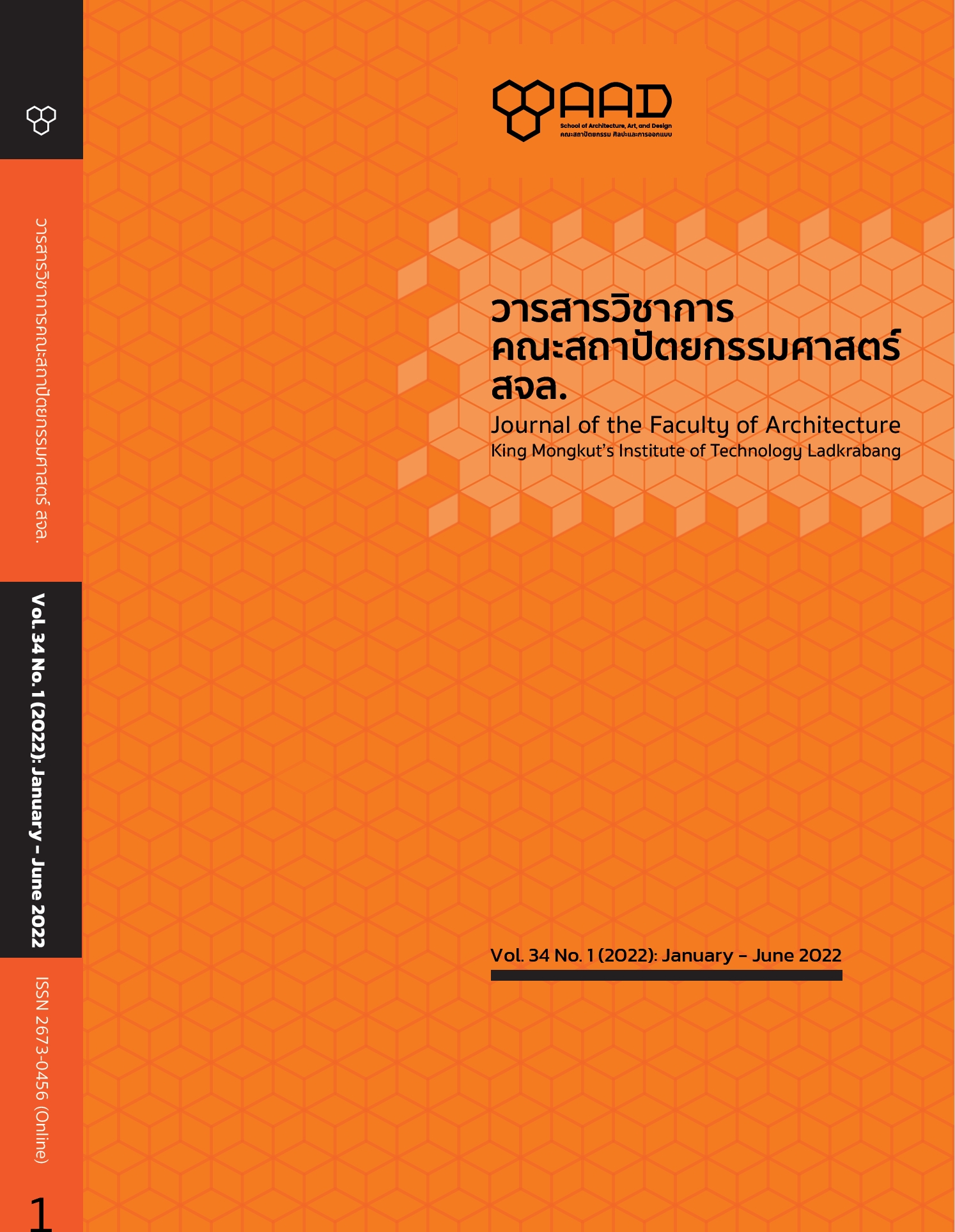The Study of Setting and A fear Reflection Through Dystopian Ideology Film in Early 21st Century
Main Article Content
Abstract
The aim of this research is to study the setting and a fear reflection through dystopian ideology film in early 21st century by using textual analysis and also research method is purposive sampling from 4 factors of dystopian film, which are (1) Dimension of Social inequality “In Time” (2) Dimension of Totalitarianism “V for Vendetta” (3) Dimension of Technology & Science’s Evolution “I, Robot” and (4) Dimension of Nature & Environmental “Children of Men”
The result of this research found that all four dystopian films are the nearly of setting in term of the timing at daytime it’s reflect the deprivation of rights from authority. On the other hand, the timing in night is very opposite because the authority make rules to be through the use of violence to show their fear. The places are going criticism that ignore. The environments are blended with modern society, building deterioration and immorality caused by human behavior, desolation, poverty of the people who seek freedom from social system that oppressive of politically, inequality, technology, science, natural disaster. Moreover, the children of Men are a reflect of an advanced dystopian society. That is on the human extinction by reflecting through early in the morning, dust, gunpowder, soot, bodies on the street, riot and migrants. Therefore, it’s under the definition knowns as “Dark dystopian film”.
However, all four films try to make realistic for reflect today’s society under the existence of the upper social structure that control the working class by overpower. The researcher believes the film will teach people in society to believe in “human morality” also create attitude who commit the rebellion of those who try to against with the power of fear. Finally, the main ideology will work on cultivate in faith and obey, If disobeying will be punished until dead.
Article Details

This work is licensed under a Creative Commons Attribution-NonCommercial-NoDerivatives 4.0 International License.
This work is licensed under a Creative Commons Attribution-NonCommercial-ShareAlike 4.0 International License.
Copyright Transfer Statement
The copyright of this article is transferred to Journal of The Faculty of Architecture King Mongkut's Institute of Technology Ladkrabang with effect if and when the article is accepted for publication. The copyright transfer covers the exclusive right to reproduce and distribute the article, including reprints, translations, photographic reproductions, electronic form (offline, online) or any other reproductions of similar nature.
The author warrants that this contribution is original and that he/she has full power to make this grant. The author signs for and accepts responsibility for releasing this material on behalf of any and all co-authors.
References
กนกกาญจน์ รักชาติ และวรุณญา อัจฉริยบดี. (2562). ลักษณะสังคมของดิสโทเปียที่ปรากฏในรวมเรื่องสั้น “สิงโตนอกคอ”. (รายงานวิจัย สาขาวิชาภาษาไทย, มหาวิทยาลัยราชภัฏสวนสุนันทา).
กำจร หลุยยะพงศ์ และสมสุข หินวิมาน. (2551). ภาพยนตร์ไทยในรอบสามทศวรรษ (พ.ศ. 2520-2547): กรณีศึกษาตระกูลหนังผี หนังรัก และหนังยุคสมัยใหม่. (รายงานวิจัย สำนักกองทุนสนับสนุนการวิจัย).
กำจร หลุยยะพงศ์. (2556). ภาพยนตร์กับการประกอบสร้างสังคม: ผู้คน ประวัติศาสตร์ และชาติ. กรุงเทพฯ: จุฬาลงกรณ์มหาวิทยาลัย.
จอร์จ ออร์เวลล์. (2563). หนึ่ง-เก้า-แปด-สี่ : 1984. (รัศมี เผ่าเหลืองทอง และอำนวยชัย ปฎิพัทธ์เผ่าพงศ์, แปล.). กรุงเทพฯ: สมมติสำนักพิมพ์.
ฉลองรัตน์ ทิพย์พิมาน. (2539). วิเคราะห์โครงสร้างการเล่าเรื่องในภาพยนตร์อเมริกันที่มีตัวเอกเป็นสตรี. (วิทยานิพนธ์นิเทศศาสตร์มหาบัณฑิต, จุฬาลงกรณ์วิทยาลัย).
ปราง ศรีอรุณ และทอแสง เชาว์ชุติ. (2561). มหานครดิสโทเปียในอาชญนิยายญี่ปุ่นเรื่อง “ราตรีสีเลือด”.วารสารภาษาและวัฒนธรรม. 37(1), 141-156.
ศิริมิตร ประพันธุ์กิจ. (2551). ความสัมพันธ์ไทย-ลาวในสื่อบันเทิง: ศึกษากรณีการประกอบสร้างอัตลักษณ์ความเป็นลาวจากภาพยนตร์ “หมากเตะโลกตะลึง”. (วิทยานิพนธ์นิเทศศาสตร์มหาบัณฑิต, จุฬาลงกรณ์วิทยาลัย).
สุทธิชัย บุณยะกาญจน. (2533). การศึกษาเชิงวิเคราะห์นิยายวิทยาศาสตร์อเมริกันแนวดิสโทเปียในช่วงค.ศ. 1950 ถึง ค.ศ. 1972. (วิทยานิพนธ์อักษรศาสตร์บัณฑิต, จุฬาลงกรณ์มหาวิทยาลัย).
สุรเดช โชติอุดมพันธ์. (2558). Literature: วรรณกรรมดิสโทเปีย Bangkok Creative Writing Workshop 4th. เข้าถึงได้จาก: https://www.youtube.com/watch?v=TQOiUAS9XPQ.
สุรเดช โชติอุดมพันธ์. (2558). ประชาไทรายงานพิเศษ: ต้นกำเนิด และอิทธิพล วรรณกรรมยูโทเปียและดิสโทเปีย. เข้าถึงได้จาก: https://prachatai.com/journal/2015/07/60233.
Boggs, J. M. and Petrie, D. W. (2003). The Art of Watching. 6th ed. New York: McGraw-Hill Companies.
Bourke, J. (2005). Fear: A Cultural History. London: Virago Press.
Demerjian, L. M. (2016). The Age of Dystopia: One Genre, Our Fear Our Future. United Kingdom: Cambridge Press.
Ene, M. (2016). There’s More to Fear than Fear Itself: Fears and Anxieties in the 21st Century “The Imaginary of Fear and Anxieties in Contemporary Dystopian Film”. Oxfordshire: Inter-Disciplinary Press.
Fisher, M. (2009). Capitalist Realism: Is There No Alternative?. Winchester: John Hunt Publishing Books.
Grant, B. K. (2007). Film genre: From Iconography to Ideology. New York: Wallflower Press.
Howard, R. & Lavers, A. (2013). Mythologies. United Kingdom: Hill and Wang.
Kellner, D. (2010). Cinema wars: Hollywood film and politics in the bush-cheney era. New Jersey: Wiley-Blackwell.
Kopievsky, M. (2017). Rebellion Divided Elements Book I. Australia: Kyrija Publishing. of Innocence. London: Routledge.
Peter, F. (2009). A short history of utopian studies. Science fiction studies Journal. 36(1), 126.
Philpott, S. & Mutimer, D. (2009). The United State of Amnesia: Us Foreign Policy and the Recurrence
Queenan, J. (2015). From insurgent to Bladerunner: Why Is the Future on Film Always So Grim?. The Guardian. Retrieve from: www.theguardian.com.
Richard, G. N. (2018). Imaging Race and Neoliberalism In young Adult Dystopian Cinema. (Master thesis, University of Lethbridge).
Tawada, Y. (2018). The Emissary. New York: New Direction Publishing.
The Standard. (2019). ดิสโทเปียไม่สิ้นหวัง อ่านเล่มไหนดี EP.31. Retrieved from: https://www.youtube.com/watch?v=2Tvcj1qKzGs.
Young, J. (2010). Friedrich Nietzsche: A Philosophical Biography. United Kingdom: Cambridge University Press.


